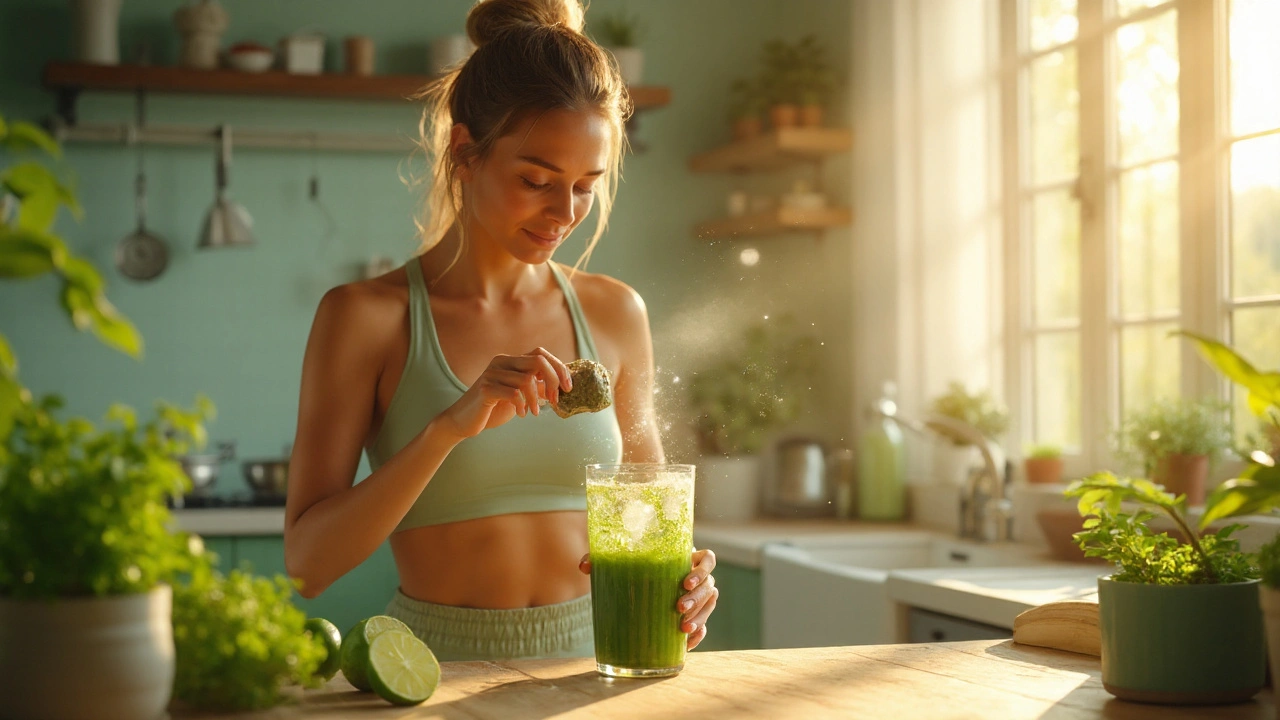Ever wonder why green leaves look so vibrant? That bright hue comes from chlorophyll, the pigment that helps plants turn sunlight into energy. For us, chlorophyll isn’t just a color – it’s a natural compound that can support digestion, freshen breath, and even give a tiny boost to your immune system.
Adding chlorophyll doesn’t require a fancy supplement routine. A handful of spinach, a cup of kale, or a few sprigs of parsley already give you a solid dose. If you’re not a fan of raw greens, blend them into a smoothie with a banana, a splash of almond milk, and a teaspoon of spirulina powder for an extra green punch.
For those who prefer pills, look for liquid chlorophyll drops or tablets that list pure chlorophyll extract (often from alfalfa or wheatgrass). Start with a small amount – half a teaspoon of liquid or one tablet daily – and see how your body reacts before upping the dose.
Digestive help: Chlorophyll can act like a mild fiber, easing constipation and supporting a healthy gut flora. Many users notice less bloating after a week of regular intake.
Breath freshening: Some studies suggest chlorophyll reduces compounds that cause bad breath. A simple chlorophyll rinse (mix water with a few drops of liquid chlorophyll) can leave your mouth feeling clean.
Detox vibes: While your liver does the heavy lifting, chlorophyll may aid in clearing toxins by binding to heavy metals. It’s not a magic detox, but it adds a helpful layer.
Safety first: Most people tolerate chlorophyll well. If you have a known allergy to wheat or alfalfa, start with a tiny dose or choose a spirulina-based product. High doses can sometimes cause mild diarrhea, so keep the amount moderate.
How much is enough? Research points to 100–300 mg of chlorophyll per day for general health. That translates to roughly 1–2 teaspoons of liquid chlorophyll or 1–2 tablets, depending on concentration.
Got more questions? Here are quick answers:
Bottom line: Chlorophyll is a cheap, natural way to boost your daily nutrient intake. Toss a few leaves into your meal, try a low‑dose supplement, and notice how your gut, breath, and overall energy feel after a couple of weeks. No need for complicated regimens – just add a splash of green and enjoy the simple benefits.

Discover how couch grass, the all‑natural dietary supplement, fuels your body with chlorophyll, fiber and antioxidants for a healthier, more energetic lifestyle.
Read More